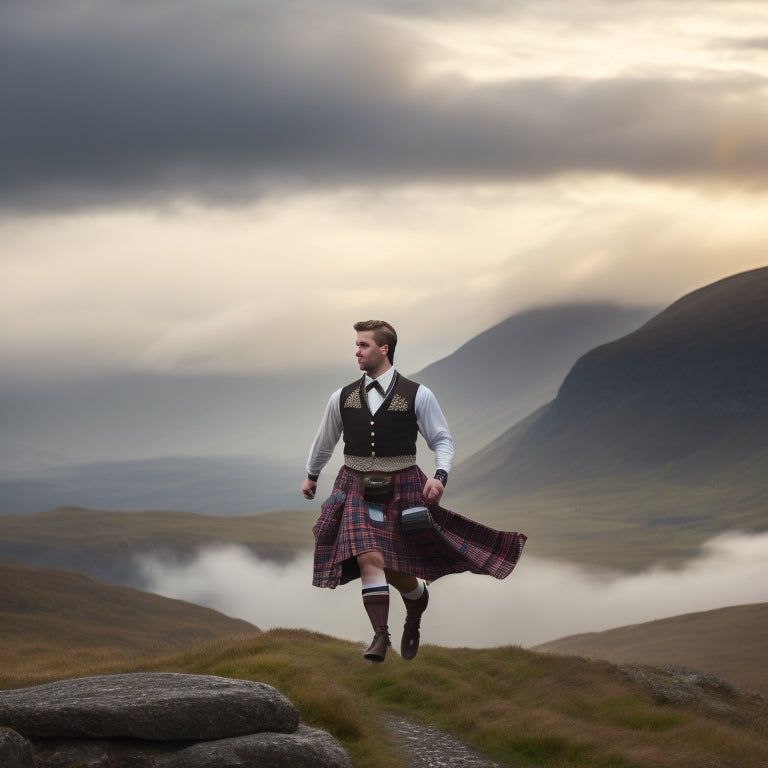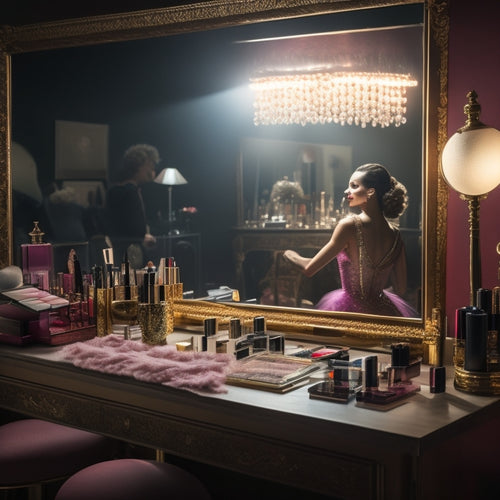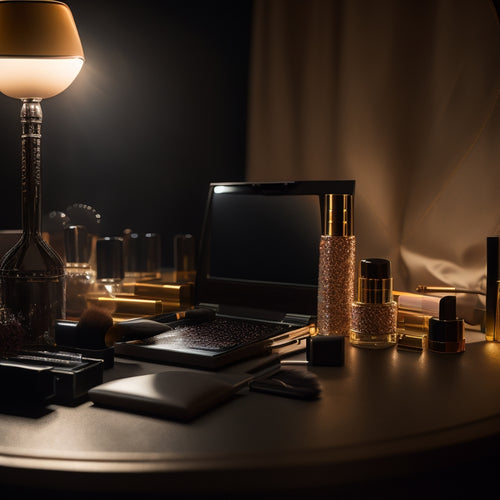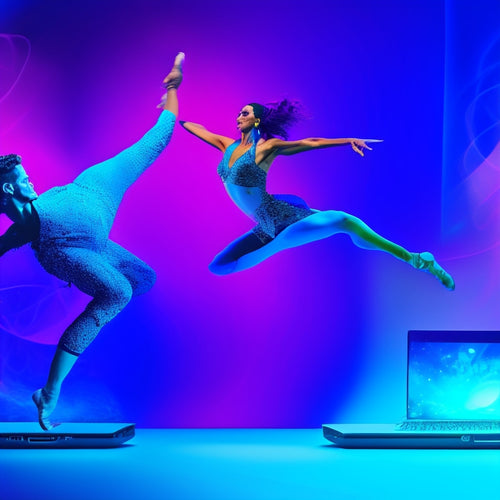
Do Highland Dancers Wear Kilts?
Share
When you think of Highland dance, you likely envision a kilt-clad dancer, but the reality is that traditional Highland dance costumes are more diverse than that, and the kilt is just one of many elements that reflect the rich cultural heritage of Scotland. In fact, kilts aren't even essential in traditional Highland dance costumes - dancers often wear dresses, skirts, and vests that showcase their family or clan affiliations through tartan patterns. As you explore the world of Highland dance, you'll discover the intricate details and nuances that make this traditional art form so vibrant and complex, and how modern twists are redefining it.
Key Takeaways
• Kilts are not essential in traditional Highland dance costumes, debunking common misconceptions.
• Highland dancers wear various outfits like dresses, skirts, and vests, showcasing cultural diversity.
• Tartan patterns and traditional fabrics shape the look of Highland dance attire, reflecting Scotland's rich cultural heritage.
• Modern designers incorporate innovative materials, patterns, and styles, blending ancient traditions with modern aesthetics.
• Authenticity is prioritized in Highland dance costumes, with careful selection of fabrics, colors, and patterns adhering to Scottish heritage.
Origins of Highland Dance Attire
When you investigate the history of Highland dance attire, you'll discover that its origins are deeply rooted in 16th-century Scottish culture, where tartan patterns and traditional fabrics played a significant role in shaping the distinctive look of Highland dancers.
As you explore further, you'll find that the attire is an integral part of Scotland's rich cultural heritage, reflecting the country's history, traditions, and values. The tartan patterns, in particular, hold significant cultural significance, representing the wearer's clan, family, and regional identity.
By embracing these traditional elements, Highland dancers proudly showcase their Scottish heritage, connecting with their ancestors and honoring their cultural roots.
As you learn more about Highland dance attire, you'll appreciate the intricate balance between aesthetics, functionality, and cultural significance that defines this iconic look.
Traditional Highland Dance Outfits
You'll notice that traditional Highland dance outfits typically consist of a specific set of components, each playing an important role in capturing the essence of Scotland's rich cultural heritage.
The tartan choices, for instance, are a significant aspect of the outfit, with dancers often opting for specific tartans that reflect their family or clan affiliations.
Fabric selection is also essential, with dancers preferring fabrics that are durable, yet lightweight and breathable. This attention to detail guarantees that the outfit not only looks stunning but also allows for maximum freedom of movement.
Kilt Myth-Busting in Highland Dance
Discrediting the myth that kilts are an essential component of Highland dance attire, let's explore the truth behind this popular misconception.
You may be surprised to learn that kilts aren't a staple in traditional Highland dance costumes. This misconception stems from kilt stereotypes and Scottish misconceptions that have been perpetuated through media and popular culture.
In reality, Highland dancers often wear a variety of outfits, including dresses, skirts, and vests, which are often adorned with intricate details and patterns.
By shedding light on these misconceptions, you'll gain a deeper understanding of the rich cultural heritage behind Highland dance.
Modern Twists on Traditional Attire
As Highland dance evolves, modern designers are incorporating innovative materials, patterns, and styles into traditional attire, breathing fresh life into the art form's rich cultural heritage. You'll notice Fashion Fusion taking center stage, blending ancient traditions with modern aesthetics.
This Cultural Exchange is reinvigorating the art form, allowing dancers to express themselves in fresh, bold ways. You might spot a tartan-print leotard paired with a flowing skirt or a kilt-inspired skirt with a modern twist.
The result is a vibrant, eclectic mix of old and new, as dancers proudly showcase their cultural roots while embracing modernity. This fusion of old and new is redefining Highland dance, propelling it forward while honoring its heritage.
Authenticity in Highland Dance Costumes
Highland dancers prioritize authenticity in their costumes, which is reflected in their careful selection of fabrics, colors, and patterns that adhere to traditional Scottish heritage.
You'll notice that they often opt for tartan patterns, which are woven into the fabric of Scottish history.
This attention to detail is vital in maintaining cultural sensitivity and avoiding fashion politics.
| Traditional Element | Modern Interpretation |
| Tartan patterns | Incorporating subtle variations while respecting heritage |
| Natural fabrics | Using sustainable materials that evoke a sense of nostalgia |
| Earthy tones | Incorporating rich jewel tones to add depth and sophistication |
| Celtic motifs | Incorporating subtle nods to Scottish mythology and folklore |
Frequently Asked Questions
Can Highland Dancers Wear Other Types of Traditional Scottish Clothing?
As you explore traditional Scottish attire, you'll find that, yes, you can wear other types of clothing, such as tartan sashes and Argyle jackets, which are equally rooted in Scottish heritage and perfectly suitable for highland dancers.
Are Highland Dance Costumes Only Worn for Competitions?
As you explore Highland dance, you'll find that costumes are not limited to competitions; they're also worn for performances and exhibitions, distinguishing formal attire from everyday wear, showcasing cultural heritage with freedom and pride.
Do Highland Dancers Need to Be of Scottish Descent to Participate?
"A million people can't be wrong - you're curious about Highland dance! To put your mind at ease, no, you don't need to be of Scottish descent to participate; cultural heritage and family lineage aren't prerequisites."
Can Men Participate in Highland Dance, or Is It Only for Women?
As you explore Highland dance, you'll find that men can indeed participate, dispelling male stereotyping and gender barriers, allowing anyone to experience the freedom and joy of this traditional Scottish art form.
Are Highland Dance Costumes Only Worn for Formal Events?
You'll find that Highland dance costumes are not limited to formal events; in fact, many dancers wear adapted, casual attire for everyday wear, blending tradition with modern freedom of expression.
Related Posts
-

5 Essential Tips for Dance Makeup Artists Online
As a dance makeup artist, you know having a strong online presence is key to success. You need a professional website...
-

Get Stage-Ready: Online Dance Makeup Tutorials at Home
You're about to reveal the secrets to a stage-ready dance makeup look from the comfort of your own home. First, ident...
-

Unleashing Business Success Through Dance E-Learning
Dance e-learning is revolutionizing business success by making high-quality training accessible to aspiring dancers w...


